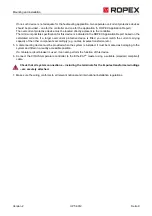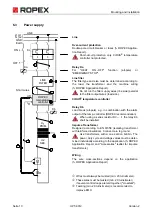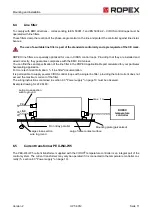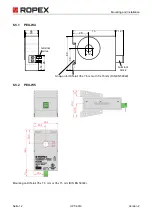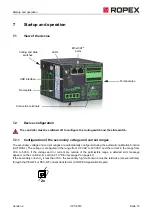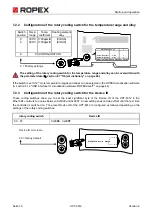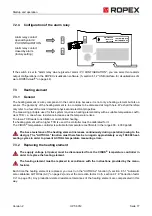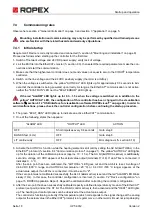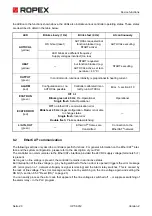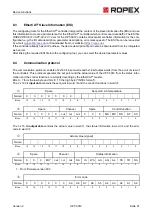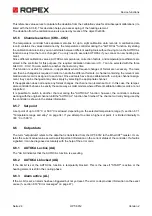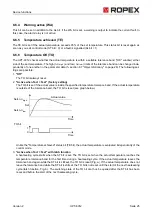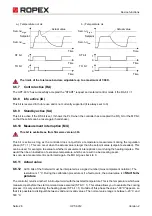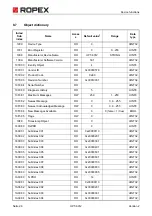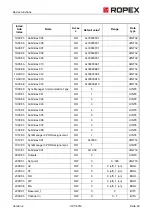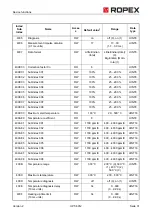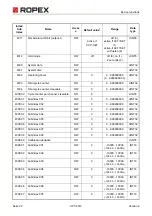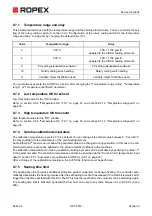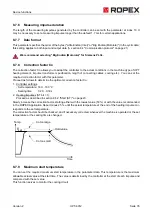
Device functions
Seite 22
UPT-6012
Version 2
8.5
Input data
The term "input data" refers to the data that is transferred from the EtherCAT
®
master to the UPT-6012. It contains
the set point as well as the control functions such as START or AUTOCAL for the UPT-6012. These functions are
explained in the following.
8.5.1
Automatic zero calibration AUTOCAL (AC)
Owing to the automatic zero calibration (AUTOCAL) function, there is no need to adjust the zero point manually
on the controller. This function adjusts the controller to the current and voltage signals present in the system and
calibrates it to the value which is predefined in the parameter data (
section 8.7.4 "Variable calibration temper-
ature" on page 34). If no parameter data is transferred by the EtherCAT
®
master, the default value is 20 °C.
Some EtherCAT
®
masters do not allow the parameter data to be changed during operation. In this case, the cali-
bration temperature cannot be adapted to the actual ambient conditions in the machines.
The calibration temperature can thus be specified by means of the "Set point / AC temperature" input data when-
ever the zero point is calibrated, provided this is permitted in the parameter data (
bration temperature" on page 34). You can specify it in the 0…+40 °C range. The specified calibration temperature
must be entered in the "Set point / AC temperature" input data when the AUTOCAL function is activated
(AC bit = 1). This specified value must not be changed until the "AUTOCAL" function has finished.
If the specified temperature is too high (greater than 40 °C) or if the specified value fluctuates, an error message
appears (error codes 115 and 116;
section 8.19 "Error messages" on page 47).
The AUTOCAL request (AC bit = 1) is executed by the controller provided the AUTOCAL function is not blocked.
The automatic calibration takes around 10…15 seconds. The heating element is not heated during this period. The
yellow LED on the front panel lights up while the AUTOCAL function is executing and the controller shows
"AUTOCAL active" (AA bit = 1) in the output data. The actual value output (terminals 17+18) changes to 0…3 °C
(corresponds to approx. 0 VDC).
If the temperature of the heating element fluctuates, the AUTOCAL function is executed a maximum of three times.
If the function still cannot be executed successfully, an error message appears (
You should always wait for the heating element to cool down (to ambient temperature) before acti-
vating the AUTOCAL function.
Reasons for blocked AUTOCAL function:
1. An AUTOCAL request cannot be accepted until 10 seconds after the controller is switched on. During this time
the controller shows "AUTOCAL blocked" (AG bit = 1) in the output data.
2. The AUTOCAL function is not activated if the heating element cools down at a rate of more than 0.1 K/s. If the
AC bit is set, the function is automatically executed when the cooling rate falls below the specified value.
3. If the START bit is set (ST bit = 1), the AUTOCAL function is not executed ("HEAT" LED lit).
4. If the RESET bit is set (RS bit = 1), the AUTOCAL function is not executed.
5. The AUTOCAL function cannot be activated if error codes 101…103, 201…203 or 9xx appear as soon as the
controller is switched on (
section 8.19 "Error messages" on page 47). It also cannot be activated if error
codes 201…203 or 9xx appear and the controller has operated correctly at least once since being switched on.
If the AUTOCAL function is blocked (AG bit = 1), an AUTOCAL request (AC bit = 1) causes the "AUTOCAL" LED
to blink fast (4 Hz).
Start temperature (signed)
Name:
Bit no.:
15
14
13
12
11
10
9
8
7
6
5
4
3
2
1
0
!


